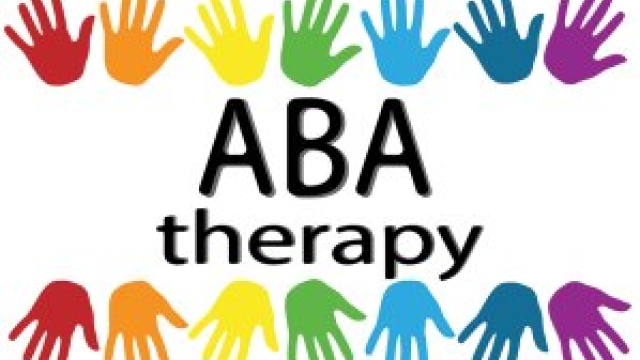Unlocking the Potential: A Deep Dive into ABA Therapy
When it comes to unlocking the potential for individuals on the autism spectrum, Applied Behavior Analysis (ABA) therapy has emerged as a powerful tool. ABA therapy is a widely recognized and evidence-based approach that focuses on understanding and changing behavior patterns through real-life applications. By systematically analyzing the relationships between behavior, the environment, and the consequences that follow, ABA therapy provides individuals with valuable skills that promote independence, social connections, and overall well-being.
At its core, ABA therapy is rooted in the belief that every behavior, regardless of its nature, serves a purpose. Through careful observation and data collection, ABA therapists work meticulously to uncover the underlying reasons behind certain behaviors and then develop strategies to enhance desirable behaviors while minimizing those that may be interfering with an individual’s progress. This comprehensive approach allows for a deep understanding of the unique challenges faced by individuals with autism and, consequently, paves the way for targeted interventions and supports tailored to their specific needs.
By focusing on breaking down complex skills into smaller, more manageable components, ABA therapy empowers individuals to learn at their own pace. The therapy uses a variety of techniques, including positive reinforcement, prompts, and prompting fading, to shape behavior and teach new skills across different settings and situations. From improving communication and social interaction to developing self-help skills and reducing challenging behaviors, ABA therapy offers a comprehensive framework that can significantly impact the lives of those undergoing treatment.
As we dive deeper into the realm of ABA therapy, it is essential to recognize that it is not a one-size-fits-all approach. Instead, ABA therapy is highly individualized, taking into account an individual’s strengths, interests, and unique set of challenges. The collaborative nature of ABA therapy ensures that caregivers, parents, and educators are actively involved, working together with the ABA therapist to develop and implement effective strategies that promote long-term growth and success.
In this article, we will explore the key components of ABA therapy, its applications across various age groups, as well as its benefits and limitations. By shedding light on the power of ABA therapy, we hope to promote understanding, acceptance, and inclusivity for individuals on the autism spectrum, while also providing valuable insights for families, professionals, and communities on how to unlock their fullest potential.
Understanding ABA Therapy
ABA therapy, short for Applied Behavior Analysis therapy, is a widely recognized and effective approach in addressing autism spectrum disorders and other developmental challenges. This therapy focuses on understanding and modifying behavior by utilizing evidence-based techniques and principles. ABA therapy is rooted in the belief that behavior is learned and can be shaped through positive reinforcement and systematic interventions.
In ABA therapy, the primary goal is to increase desirable behaviors while decreasing undesired behaviors, ultimately helping individuals develop essential life skills. This therapy places great emphasis on analyzing and breaking down complex behaviors into smaller, more manageable components. By doing so, ABA therapists are able to identify specific behavioral patterns, strengths, and areas for improvement, allowing for targeted interventions tailored to each individual’s unique needs.
The success of ABA therapy lies in its data-driven and individualized approach. ABA therapists conduct thorough assessments, collect and analyze data, and make data-based decisions to ensure progress. This method facilitates a better understanding of the factors influencing behavior and helps determine interventions that are most effective. By consistently measuring and monitoring progress, ABA therapy allows for ongoing adjustments and modifications to treatment plans, maximizing the potential for positive outcomes.

Understanding ABA therapy provides a foundation to unlock the potential of individuals with autism spectrum disorders and other developmental challenges. By focusing on behavior analysis and intervention, this therapy offers a systematic and effective approach to improve skills and promote positive change. Through the collaboration between ABA therapists, families, and individuals receiving therapy, ABA therapy creates an environment that fosters growth, independence, and a higher quality of life.
Benefits and Applications of ABA Therapy
ABA therapy, also known as Applied Behavior Analysis therapy, offers a wide range of benefits and applications that can make a significant impact on individuals’ lives. This evidence-based approach focuses on analyzing and modifying behavior to help individuals achieve meaningful and positive outcomes.
One of the key benefits of ABA therapy is its effectiveness in improving communication and social skills. By using various techniques such as modeling and reinforcement, ABA therapists can help individuals develop the necessary skills to interact and engage with others more effectively. This can greatly enhance their ability to form meaningful relationships, both personally and professionally.
Another important application of ABA therapy is in the field of education. This therapy can be highly beneficial for children with learning disabilities or developmental delays. By breaking down complex tasks into smaller, more manageable steps, ABA therapists can help these children acquire new skills in areas such as academics, self-care, and organization. This structured approach promotes independent learning and empowers individuals to succeed in their educational journey.
ABA therapy is also widely used in helping individuals overcome challenging behaviors. Through a process of careful observation and analysis, therapists can identify the root causes of these behaviors and develop interventions to effectively address them. By teaching individuals appropriate alternative behaviors and providing consistent support and reinforcement, ABA therapy can significantly reduce challenging behaviors and improve overall quality of life.
In summary, ABA therapy offers a range of benefits and applications that can have a transformative impact on individuals’ lives. From improving communication and social skills to enhancing educational outcomes and addressing challenging behaviors, this evidence-based approach holds great promise in unlocking the potential of individuals across various domains.
Critiques and Controversies Surrounding ABA Therapy
Recent critiques and controversies have emerged surrounding the practice of ABA therapy. These discussions have highlighted concerns about certain aspects of the therapy approach, leading to ongoing debates within the field.
One major critique is the issue of consent and autonomy. Critics argue that ABA therapy may not always prioritize the autonomy and self-determination of the individuals receiving treatment. Some individuals feel that ABA therapy excessively focuses on shaping behavior to fit societal norms, potentially neglecting the individual’s own preferences and desires.
Another area of controversy surrounds the use of aversive techniques in ABA therapy. Some argue that these methods, which involve applying unpleasant stimuli to discourage unwanted behaviors, can be harmful and potentially traumatizing to individuals. Critics state that alternative, positive reinforcement-based approaches should be explored to minimize potential harm.
In addition, there are concerns about the intensity and duration of ABA therapy. Critics question whether the recommended hours per week and length of treatment are excessive, potentially causing undue stress and pressure on individuals, particularly children. Discussions have arisen on finding a balance between the therapy’s benefits and the potential burdens it may place on individuals and their families.
These critiques and controversies surrounding ABA therapy highlight the need for ongoing discussions, research, and evaluation within the field. By addressing these concerns, professionals can work towards refining and improving the therapy approach to better support individuals while respecting their autonomy and unique needs.


